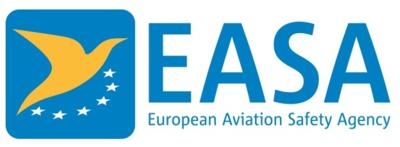Sun, Nov 01, 2020
Virtual Symposium Moved To December 9, 2020
EASA's Rotorcraft and VTOL Symposium 2020 is a unique forum in Europe to discuss the latest developments for rotorcraft from a safety perspective. Due to the COVID 19 circumstances this year, the Symposium will be modified into a live virtual event focusing on VTOL developments and safety perspectives. Speakers will be EASA Experts from various disciplines and will present the latest developments to enable the safe operation of VTOL aircraft.

The new date for the UK's Rotorcraft and VTOL Symposium 2020 is December 9, 2020. EASA had to make this adjustment to take into account some enhancements of the technical set-up for the virtual event. They hope you will be able to join them on the new date.
The live session on the 9th December from 14:00 till 16:00 will concentrate on the Rotorcraft Safety Roadmap.
Additionally, at the end of November they will upload the following 9 video presentations focusing on the current status of the Means of Compliance to support the Special Conditions on VTOL:
- Setting the scene – Update on the regulatory framework to enable electric and hybrid VTOL operations in Europe, Global state of play for Airworthiness standard for VTOLs.
- Advance of EASA Position on Energy Reserve
- Interaction Systems and Structures, Design Loads, Component loads, Structural Durability, Aeroelasticity, Protection of Structure, Materials and Processes and , Special Factors of Safety
- Flight Envelopes and Stall characteristics
- Human Factors, applicability of 1302-criteria, Flight crew compartment, occupant physical environment, installations & operation information; instrument, control markings & placards
- Landing Gear Systems; Doors, canopies and exits
- Ditching, flotation; safety equipment; means of egress and emergency exit
- Fire Protection in Designated Fire Zones
- Artificial Intelligence (AI) Roadmap
You are invited to view these short presentations beforehand and ask your question(s) via the tools integrated in the platform. They will be answering your questions during the second part of the live session on the 9th December.
There is no registration fee for joining the virtual event. Participants who have already registered for the previous date are kindly asked to visit the event page again and register once more to confirm the new date.
More News
“While legendary World War II aircraft such as the Corsair and P-51 Mustang still were widely flown at the start of the Korean War in 1950, a new age of jets rapidly came to >[...]
Decision Altitude (DA) A specified altitude (mean sea level (MSL)) on an instrument approach procedure (ILS, GLS, vertically guided RNAV) at which the pilot must decide whether to >[...]
Aero Linx: National Aviation Safety Foundation (NASF) The National Aviation Safety Foundation is a support group whose objective is to enhance aviation safety through educational p>[...]
Also: Cal Poly Aviation Club, $$un Country, Arkansas Aviation Academy, Teamsters Local 2118 In response to two recent general aviation accidents that made national headlines, more >[...]
“The FAA is tasked with ensuring our skies are safe, and they do a great job at it, but there is something about the system that is holding up the medical process. Obviously,>[...]
 Aero-News: Quote of the Day (04.28.25)
Aero-News: Quote of the Day (04.28.25) ANN's Daily Aero-Term (04.28.25): Decision Altitude (DA)
ANN's Daily Aero-Term (04.28.25): Decision Altitude (DA) ANN's Daily Aero-Linx (04.28.25)
ANN's Daily Aero-Linx (04.28.25) Airborne-Flight Training 04.24.25: GA Refocused, Seminole/Epic, WestJet v TFWP
Airborne-Flight Training 04.24.25: GA Refocused, Seminole/Epic, WestJet v TFWP Aero-News: Quote of the Day (04.29.25)
Aero-News: Quote of the Day (04.29.25)



